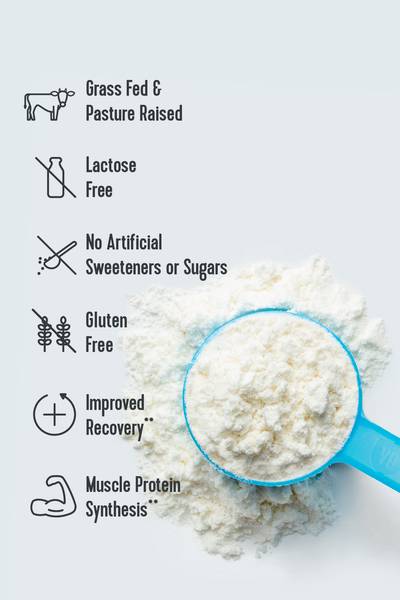Whether you've been wanting to switch up your workout routine, or you're brand new to working out, you may be wondering, How do I start off with calisthenics workouts?
It may seem simple to use your own body weight to build muscles (and itis, in the sense that you don't need a lot of space or equipment) but proper form is important in calisthenics, or you run the risk, at worst, of injury, and at best, of not getting the gains you desire because you're not doing the moves correctly.
Vital note: This article has been made available for informational and educational purposes only. It is not intended to be a substitute for professional medical advice, diagnosis, or treatment. Always seek the advice of your physician or another qualified health provider with any questions you may have regarding a medical condition. Your licensed healthcare professional can best provide you with the diagnosis and treatment of any medical condition and assist you as well in deciding whether a dietary supplement will be a helpful addition to your regimen.

What is calisthenics?
First, let's start with the basics. Consider calisthenics workout is a fancy way of saying bodyweight workouts. They include any exercise that you do that uses body weight only to perform strength training. That means everything from crunches to push-ups to jumping rope fall into this category — which leaves you with a lot of options.
How do beginners start calisthenics?
Beginners should remember that you don't need a fancy gym membership or a personal trainer to start calisthenics. You can do plenty of effective beginner calisthenics workouts at home.
Examples of moves include squats, lunges, planks, push-ups, mountain climbers and leg raises.Mastering these foundational exercises will help you build up to more difficult moves and build full-body strength.
You want to make sure you have a good understanding of the form (if you're not sure, you can watch a video made by a reputable personal trainer or schedule time in a gym or over video call to work with on on your form) before you begin.
What calisthenics skills should you start with first?
With so many calisthenics exercises to choose from, it can seem daunting to know where to start. "Start off with stable movements such as squats and push-ups and over time add in different rep and tempo variations,"online fitness coach, Leighanne Stephens, tells Lively. "Leave the crazy and cool looking stuff until after you've built some skill and strength to avoid injuring yourself."
In addition, focusing on the core can be a good place for beginners to start with calisthenics. "Core strength is vital when it comes to being able to perform calisthenics movements, so being able to hold a plank for at least a minute and a half without breaking a sweat would be a good start," Edwin Rodriguez Jr, a trainer at Miami Strong Gym, tells Lively.
Is calisthenics good for beginners?
In addition to the exercises previously mentioned (squats, lunges, planks, etc.) it's a good idea for beginners to focus on moves that cultivate balance and strength.
"Strength will enable you to [eventually] do some cool exercises but the balance will help you make sure these movements are done correctly, in a controlled manner and even help you add a little finesse to your workouts," Stephens says.
How Often should beginners train calisthenics?
There's no one-size-fits-all answer for how long you should work out as a beginner.
If you haven't worked out in a while, starting out slowly with a cardio warm-up, such as a 10-minute walk, then adding on a 10- to 15-minute beginner calisthenics workout is your best bet.
"Pick a few exercises to work on, [and decide] how many reps and setsyou're going to do and how long to rest for," Stephens says. "If you have the strength and stamina you can do more but don't push too hard too soon and get held back by injuries and too much muscle soreness."
No matter what, there's no reason for a beginner calisthenics workout to be longer than an hour,Stephens adds. If you find yourself needing that much time for what you have planned due to rest breaks or other factors, you should scale back the intensity of your home workout plan.
As always, be sure to listen to your body and modify and take breaks as needed. Only when you're ready (the moves and reps are easy to complete), should you gradually increase your workout's length and intensity.

What is a beginner calisthenics workout?
Try This full-body beginner calisthenics workout created byChris Higgins, an ACE-certified personal trainer and Editor-in-Chief of calisthenics-gear.com.
How to do it: Complete 3 to 6 sets of 10 to 20 reps of each exercise. Each exercise is performed with body weight only.
Warm Up
- Jump Rope (60 seconds)
- Deep Squat Hold (30 to 60 second hold, repeat 2 times)
- Arm Swing (1 minute each direction)
Workout
- Squat
- Forward Lunge
- Flutter Kick
- Sit-Up
- Lying Leg Raise
- Push-Up
- Triceps Dip
Cooldown
- 10-minute walk
- Static Stretching
Is 20 minutes of calisthenics enough?
While it depends on your goals and the amount of time you have, you can certainly get in an effective beginner calisthenics workout in 20 minutes.
To maximize the time you spend actually working out, it can be helpful to make a plan beforehand for what exercises you'll be working on and how many reps you're hoping to complete. You can even write it down so you can refer to the plan as you workout, which will help you tweak it in the future.(If you're looking for a good place to start, try this 20-minute workout!)















